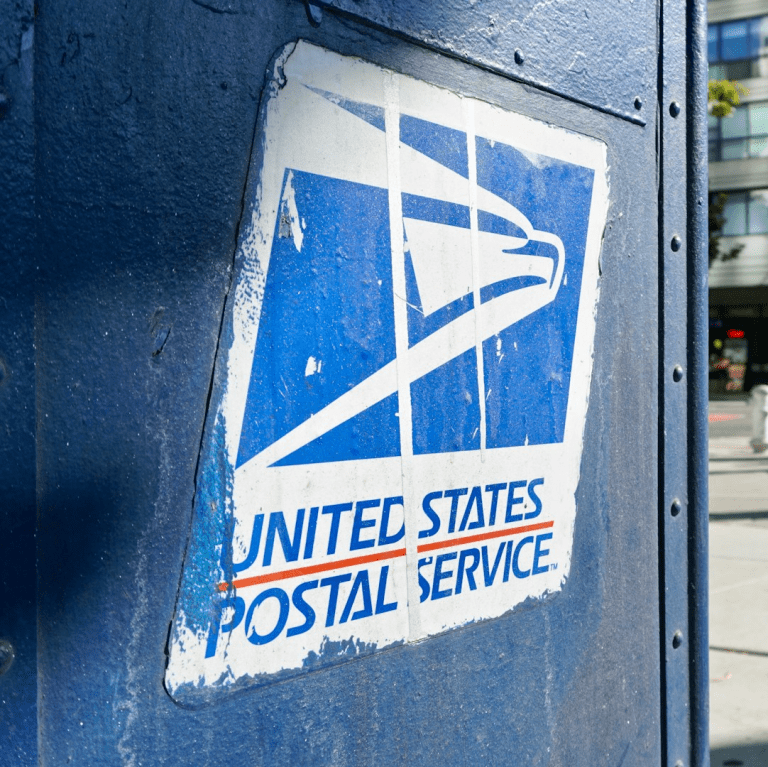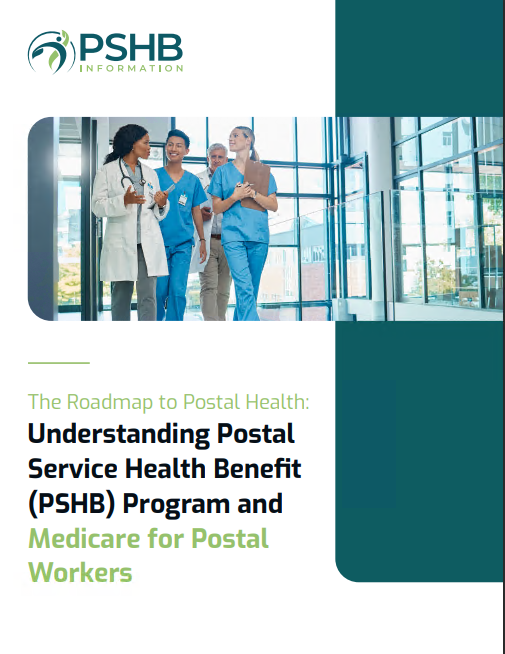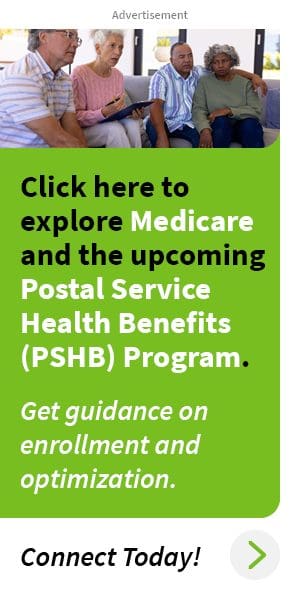Key Takeaways:
- USPS workers and retirees will transition to the new Postal Service Health Benefits (PSHB) program in 2025, marking a significant change in healthcare coverage.
- Understanding how the PSHB program affects your current coverage and preparing for open enrollment is crucial for navigating the upcoming changes effectively.
A Major Shift in Postal Worker Healthcare: Get Ready for 2025’s New Coverage
A major shift is coming to healthcare for U.S. Postal Service (USPS) workers and retirees. In 2025, the Postal Service Health Benefits (PSHB) program will go into effect, replacing the Federal Employees Health Benefits (FEHB) program for postal employees. This transition will impact both active employees and retirees, introducing new coverage options and enrollment requirements. As 2025 approaches, it’s essential for USPS employees and retirees to understand the changes ahead and how to prepare for them.
The PSHB Program: What You Need to Know
The Postal Service Health Benefits (PSHB) program was created under the Postal Service Reform Act of 2022. It will take full effect in January 2025, replacing the FEHB program for postal workers. The PSHB program is designed specifically for USPS employees and retirees, addressing the unique needs of the postal workforce. Unlike the FEHB program, which covers all federal employees, the PSHB is a standalone program exclusively for USPS workers and their families.
One of the key differences in the new PSHB program is its focus on integrating Medicare for postal retirees. Retirees who are eligible for Medicare will now be required to enroll in Medicare Part B as part of their healthcare coverage. This change is designed to streamline costs and coverage, ensuring that retirees have access to comprehensive benefits while reducing the financial burden on the Postal Service. For active employees, the PSHB will continue to offer a range of healthcare plans similar to those under the FEHB program, though the specifics of plan options and coverage will be tailored to the postal workforce.
Who Will Be Affected by the Changes?
The PSHB program will affect all current USPS employees, retirees, and their dependents. Whether you are currently enrolled in the FEHB program or are a retiree receiving healthcare benefits, you will need to transition to the new system in 2025. This includes:
-
Active Employees: All USPS workers will be automatically transitioned from the FEHB to the PSHB program. They will have the opportunity to select from a variety of healthcare plans during the open enrollment period.
-
Retirees: If you are a retired USPS worker and are already enrolled in Medicare Part A, you will need to sign up for Medicare Part B as part of your new PSHB coverage. Retirees not yet eligible for Medicare will continue to receive coverage through the PSHB without immediate changes.
-
Spouses and Dependents: Family members covered under a USPS worker’s FEHB plan will also need to transition to the PSHB. Ensuring all dependents are covered appropriately will be an important step during the transition.
How Will Medicare Integration Affect Retirees?
For many retirees, one of the most significant changes under the PSHB program will be the mandatory enrollment in Medicare Part B. If you are a USPS retiree who qualifies for Medicare (typically at age 65), you will be required to enroll in Medicare Part B to maintain your healthcare coverage under the PSHB. This integration is designed to provide retirees with more comprehensive coverage by combining Medicare with the PSHB’s private health plans.
Medicare Part B covers outpatient services, such as doctor visits, preventive care, and certain medical supplies. By enrolling in Part B, retirees will have access to both Medicare benefits and additional coverage provided by PSHB plans, potentially reducing out-of-pocket costs for services that Medicare alone may not fully cover.
If you are a retiree approaching Medicare eligibility, it is essential to start planning now. Missing the enrollment window for Medicare Part B could result in late enrollment penalties, which could increase your monthly premiums. Understanding the Medicare enrollment process and how it fits into your PSHB plan is key to a smooth transition.
What Happens If You Don’t Enroll in Medicare Part B?
For retirees, failing to enroll in Medicare Part B when eligible could have serious consequences under the new PSHB program. Without Part B enrollment, you may lose access to the comprehensive healthcare coverage provided by the PSHB plans. This could leave you with gaps in your healthcare benefits, potentially resulting in higher out-of-pocket costs for medical services.
To avoid this, it’s important to monitor your Medicare eligibility and take action during the open enrollment period. Medicare Part B enrollment typically begins three months before your 65th birthday and lasts for seven months. By enrolling on time, you can ensure continuous healthcare coverage without penalties or lapses.
Preparing for Open Enrollment in the PSHB Program
As the 2025 rollout of the PSHB program approaches, preparing for the open enrollment period is crucial. Open enrollment is your opportunity to review the healthcare plan options available under the PSHB and choose the one that best fits your needs. During this time, you will have the chance to:
-
Review Plan Options: Just like the FEHB, the PSHB program will offer multiple healthcare plans. Take the time to compare the benefits, network coverage, and out-of-pocket costs for each option to find the best fit for you and your family.
-
Confirm Medicare Enrollment: If you are a retiree, double-check that you are enrolled in both Medicare Part A and Part B. This will ensure that your PSHB coverage is fully activated and that you receive the benefits you’re entitled to.
-
Update Dependent Information: If your spouse or dependents are covered under your plan, make sure their information is up to date and that they are included in your PSHB coverage during enrollment.
-
Ask Questions: If you’re unsure about any part of the PSHB program, don’t hesitate to ask questions. Reach out to a licensed insurance agent or consult official USPS resources to get the answers you need.
Key Dates to Keep in Mind
With the transition to the PSHB program set for January 2025, it’s important to stay aware of key dates in the lead-up to the switch. Here are a few dates to mark on your calendar:
-
2024 Open Enrollment: The open enrollment period for 2025 healthcare coverage will take place in the fall of 2024. This is your opportunity to review your plan options and make any necessary changes to your coverage.
-
January 2025: The PSHB program officially goes into effect. If you are a USPS employee or retiree, your new coverage will begin on this date.
-
Medicare Enrollment Periods: If you are approaching Medicare eligibility, keep track of your personal Medicare enrollment period to ensure you are signed up for both Part A and Part B in time.
How to Get Ready for the Transition
The transition to the PSHB program doesn’t have to be stressful, but it does require preparation. Here are some steps you can take to ensure you’re ready for 2025:
-
Stay Informed: Keep an eye on official USPS communications about the PSHB program. Updates on plan options, enrollment periods, and other key details will help you stay on top of the transition.
-
Evaluate Your Current Coverage: Take a close look at your current FEHB plan and consider how it meets your healthcare needs. This will help you evaluate the new PSHB plan options during open enrollment.
-
Plan for Medicare: If you are a retiree, make sure you understand how Medicare enrollment works and how it will fit into your PSHB coverage. Contact a licensed insurance agent if you have questions about Medicare or PSHB integration.
Get Ready for 2025’s Healthcare Shift
The transition to the Postal Service Health Benefits (PSHB) program marks a significant change for USPS workers and retirees. Whether you’re an active employee or a retiree, understanding the new healthcare landscape is crucial. With Medicare integration for retirees and tailored plan options for workers, the PSHB program promises to deliver coverage designed specifically for postal employees. As 2025 approaches, take the time to prepare for open enrollment, understand your new coverage options, and ensure you and your family are ready for the switch.









